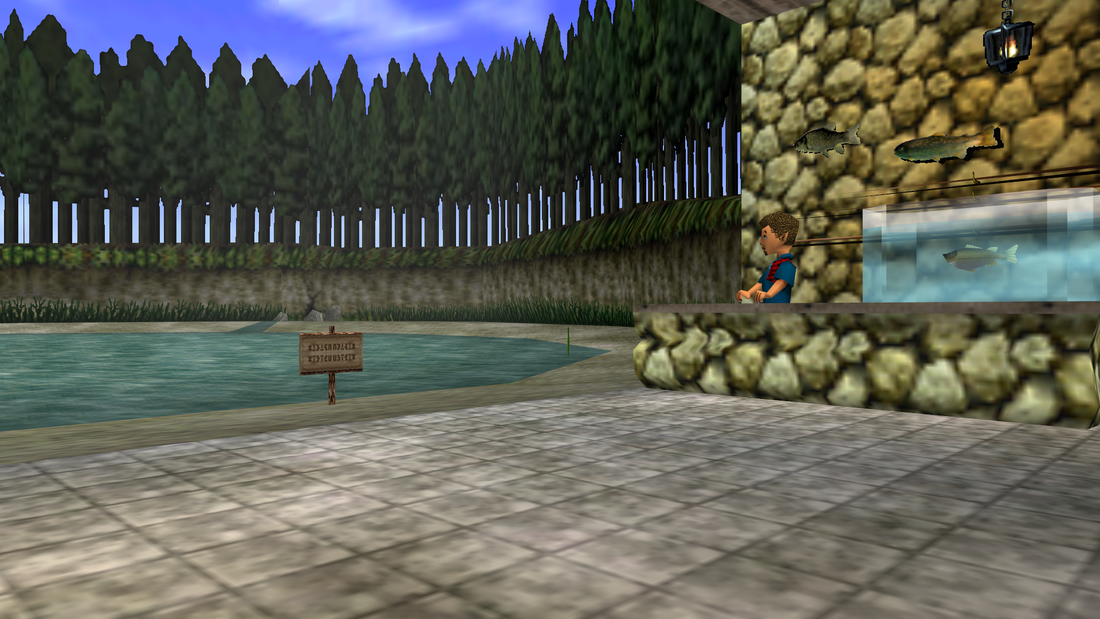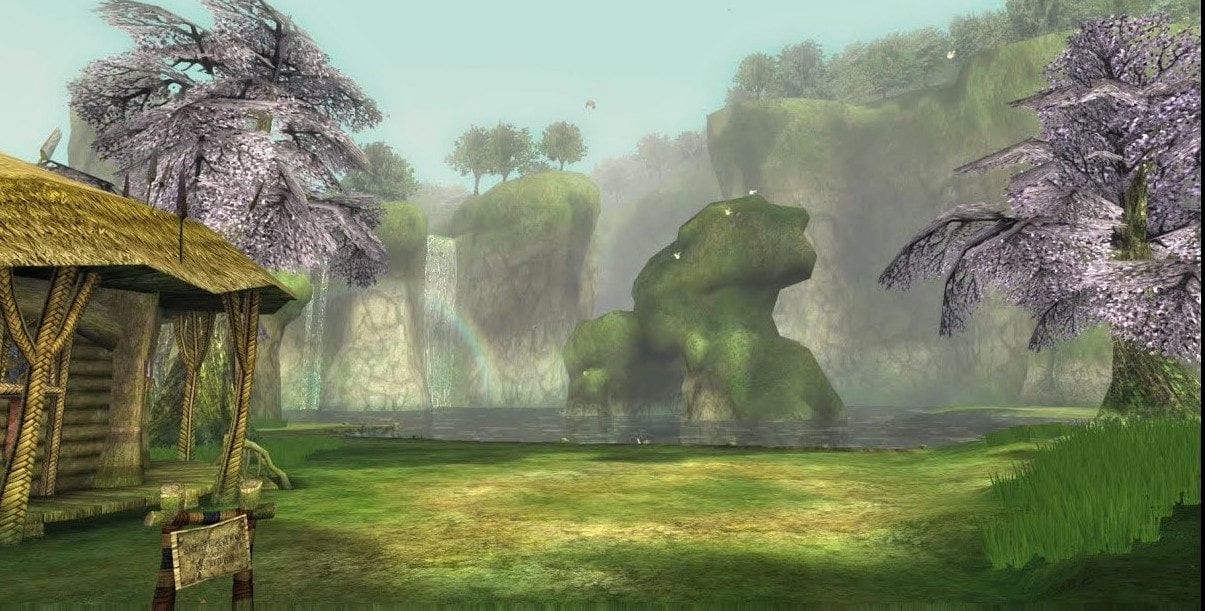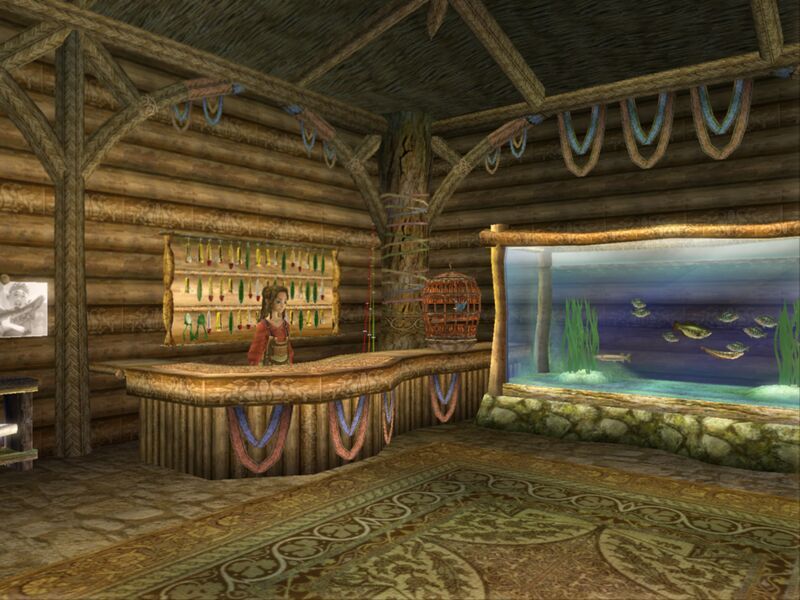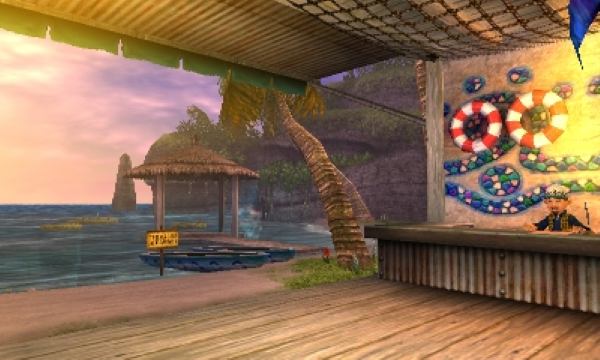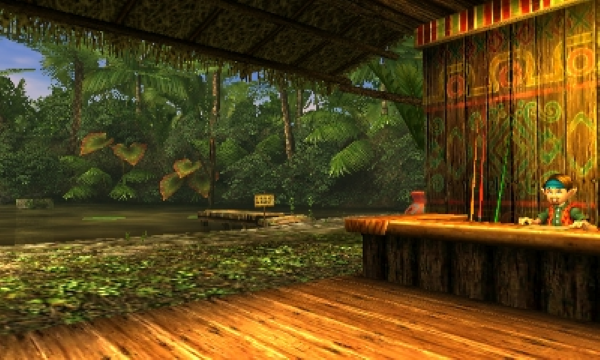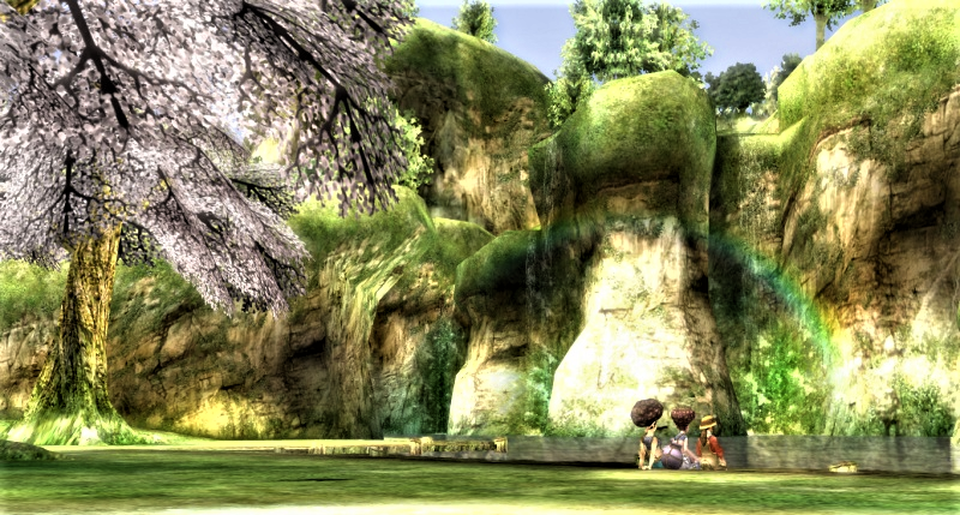To the Fishing Hole
Rules and Regulations:
- No Sinking Lures
- No littering
- No running
- No casting at anyone
Sign at the Fishing Pond, Ocarina of Time
While most of my Zelda memories are tied up in the most haunting and mystifying locations and dungeons to be found in Hyrule, there exists also the reverse to that coin — a smaller pool of memories attached to those places that are cozy, accessible, and that speak of a lasting peace. There are those, like the Laundry Pool of Majora’s Mask or the Lumpy Pumpkin of Skyward Sword, that remain bound in one game, and there are others, like the shooting gallery or post office, which surface again and again, connecting the series to itself in ever-gratifying ways. Yet, for me, the Fishing Hole (which I will use over Fishing Pond in this article [1]) reigns supreme; it is the place which most consistently provides respite from the worries of the world, and a place where negativity and fear are dropped at the door. And this is a sentiment not simply felt by me, but by a great many fans of the series, and even by most Hylians. [2] These locations even hold sway among their designers. In one of my favorite interviews from Nintendo, Kazuaki Morita admits to creating the fishing hole from Ocarina behind even Aonuma’s back; for him, it was a place to retire to when boss design became overwhelming. [3] Once it was discovered, the entire team was behind the idea, and, lacking a place to fit it in around Lake Hylia, they ended up slapping “doors onto a bare stretch of cliff at the edge of the lake.” [4] So what was originally a rather complicated stress-reliever on the development side of the game eventually became a fully-fledged stress-reliever on the player’s side, as well. What a delightful thing to have happened.
Fishing in Zelda is usually facilitated by fishermen who give Link both gear and directions; and although there is some continuity between games as to this character, it is in the location that we find the greatest connections. [5] All these various fishing holes are small, rather secluded areas, and most are far removed from civilization. In Link’s Awakening, Link can fish just north of Mabe Village; in Ocarina of Time, the fishing hole can be found near Lake Hylia; in Majora’s Mask, there are both the Ocean Fishing Hole and the Swamp Fishing Hole; and in Twilight Princess, Hena’s Fishing Hole can be found in an isolated section of the Upper Zora’s River. Their remoteness lends to them exactly the sense of serenity that we long for when world-saving becomes too vast and unbearable. We feel, for a moment, as if the world has stopped and we find ourselves on vacation. Even if we do not fish in these locations, it is still nice to simply watch the light upon the water and wonder about the troubles of fish.
|
Above: The Ocean Fishing Hole from Majora's Mask.
|
Above: The Swamp Fishing Hole from Majora's Mask.
|
The most highly developed fishing holes are those of Ocarina and Twilight Princess, and both are enclosed spaces centering around large pools with various rock and water features. Protruding masses of stone, submerged logs, lily pads and water weeds — these form the natural decorative elements of these places, and give the ponds that sense of balance that all gardens need between the organic and the artificial. Sand bars and islands here and there allow for different vantage points of the pools, and, because these are largely enclosed spaces, they frame the sky overhead so that it appears a picture. So too do the buildings on these properties open out onto nature, for most of them lack a fourth wall, making them open to constant views of the water they depend on. Wood and stone are the common elements of construction, and though there is some amount of differentiation in terms of decoration — especially between the Swamp and Ocean Fishing Holes in Termina — the design and embellishment is all very much centered on their purpose and activity. Fish tanks show off what is available to catch, fishing journals keep a record of the past, and fishing lures line shelves, sparkling and catching the eye. Any other decorations are secondary in these places — attendants to the nature just outside. For that is what these spaces truly represent: a nature that has been framed for human enjoyment, so that when the world without becomes too much, there is always another world waiting just within.
Notes and Works Cited:
[1] Even though I played Ocarina of Time before all others, which refers to it as the Fishing Pond, I fell most in love with Hena’s Fishing Hole in Twilight Princess. And because fishing mini-games only show up in four titles* and are referred to in two distinct, yet balanced ways — Link’s Awakening and Ocarina of Time both refer to it as “pond” and Twilight Princess and Majora’s Mask both call it a “hole” — I will elect to use Fishing Hole because it resonates with a sort of rustic peace that just does it for me. (The Zelda Encyclopedia also refers to them as fishing holes, if you want more sound reasoning.)
*I suppose you could count the “fishing” done in A Link to the Past or Breath of the Wild as fishing, but it’s certainly not what I’m talking about in this article.
[2] “It takes considerable skill and patience to catch a fish, and trying is a common pastime in Hyrule — done for sport. Fishing is popular at dedicated fishing holes, where many compete to catch the rarest, biggest, or most elusive types . . . In Twilight Princess, fishing plays a significant role in daily life, and fishing poles are common equipment.”
“Regardless of the era, there always seem to be people in Hyrule with a passion for fishing.”
White, Keaton C., et al. The Legend of Zelda: Encyclopedia. Dark Horse Books, 2018, p. 79.
[3] “Yep. But at that time, it was just for my own enjoyment. You know, for when I needed to take a breather.”
“Making the Fishing Game.” Original Development Staff. Nintendo, Iwata Asks:
iwataasks.nintendo.com/interviews/#/3ds/zelda-ocarina-of-time/2/3.
[4] Ibid.
[5] For instance, if one peeks at a certain picture at Hena’s Fishing Hole, they can see the Fishing Hole Man from Ocarina of Time struggling under a weighty catch. Hena believes herself (wishfully) to be his descendant, though she cannot prove such a claim.
"He just may be one of my ancestors! Of course, I can't exactly PROVE that ... It's kinda just wishful thinking on my part." — Hena, Twilight Princess
[1] Even though I played Ocarina of Time before all others, which refers to it as the Fishing Pond, I fell most in love with Hena’s Fishing Hole in Twilight Princess. And because fishing mini-games only show up in four titles* and are referred to in two distinct, yet balanced ways — Link’s Awakening and Ocarina of Time both refer to it as “pond” and Twilight Princess and Majora’s Mask both call it a “hole” — I will elect to use Fishing Hole because it resonates with a sort of rustic peace that just does it for me. (The Zelda Encyclopedia also refers to them as fishing holes, if you want more sound reasoning.)
*I suppose you could count the “fishing” done in A Link to the Past or Breath of the Wild as fishing, but it’s certainly not what I’m talking about in this article.
[2] “It takes considerable skill and patience to catch a fish, and trying is a common pastime in Hyrule — done for sport. Fishing is popular at dedicated fishing holes, where many compete to catch the rarest, biggest, or most elusive types . . . In Twilight Princess, fishing plays a significant role in daily life, and fishing poles are common equipment.”
“Regardless of the era, there always seem to be people in Hyrule with a passion for fishing.”
White, Keaton C., et al. The Legend of Zelda: Encyclopedia. Dark Horse Books, 2018, p. 79.
[3] “Yep. But at that time, it was just for my own enjoyment. You know, for when I needed to take a breather.”
“Making the Fishing Game.” Original Development Staff. Nintendo, Iwata Asks:
iwataasks.nintendo.com/interviews/#/3ds/zelda-ocarina-of-time/2/3.
[4] Ibid.
[5] For instance, if one peeks at a certain picture at Hena’s Fishing Hole, they can see the Fishing Hole Man from Ocarina of Time struggling under a weighty catch. Hena believes herself (wishfully) to be his descendant, though she cannot prove such a claim.
"He just may be one of my ancestors! Of course, I can't exactly PROVE that ... It's kinda just wishful thinking on my part." — Hena, Twilight Princess

